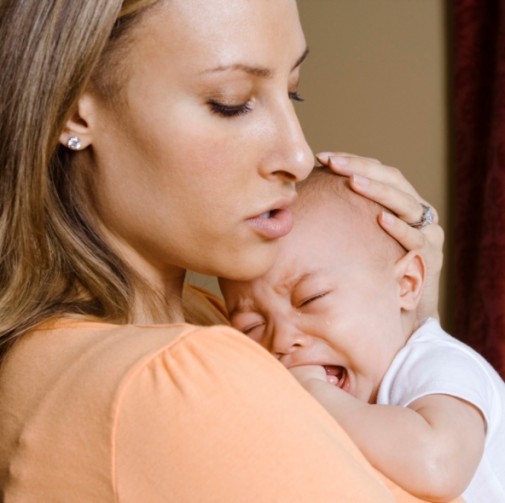Related Posts
Comments
2 Comments
About the Author
health enews staff is a group of experienced writers from our Advocate Health Care and Aurora Health Care sites, which also includes freelance or intern writers.

When babies are upset and moms hold them in their arms and walk, it can feel like magic. The crying stops, and the soothing begins. Ever wonder why? Science may have found the answer.
Study results published in April in the journal Current Biology revealed that infants experience an automatic calming reaction when carried. During the research, infants younger than 6 months old immediately stopped crying and voluntary movement, plus showed a fast decrease in heart rate when carried by a walking mom vs. those infants held by a sitting mom.
The same research was done on mice with similar responses, after a researcher took note of a mouse’s response while cleaning cages in her lab. “When I picked the pups at the back of the skin very softly and swiftly as mouse mothers did, they immediately stopped moving and became compact,” said Kumi Kuroda, of the RIKEN Brain Science Institute in Saitama, Japan, in a statement.”
“They appeared relaxed, but not totally floppy, and kept the limbs flexed. This calming response in mice appeared similar to me to soothing by maternal carrying in human babies,” said Kuroda.
Researchers found that the calming response is actually “a coordinated set of central, motor, and cardiac regulations,” that is a natural part of mammalian mother-infant interaction preserved over time.
The study concluded that the best place for the best chance of survival of a baby is in the mother’s arms. This, the study noted, in conjunction with the idea that babies naturally stop crying when they are carried is an evolutionary win-win.
Researchers said the findings have important parenting implications and may even play a role in preventing child abuse by helping adults see things from an infant’s vantage point.
“A scientific understanding of this infant response will save parents from misreading the restart of crying as the intention of the infant to control the parents, as some parenting theories—such as the ‘cry it out’ type of strategy—suggest,” Kuroda said.
“Rather, this phenomenon should be interpreted as a natural consequence of the infant sensorimotor systems.”
Kuroda added, “If parents understand that properly, perhaps they will be less frustrated by the crying.”
And hopefully with less frustration comes a lower risk of abuse.

health enews staff is a group of experienced writers from our Advocate Health Care and Aurora Health Care sites, which also includes freelance or intern writers.
Get these health and wellness insights emailed to you three times a week.

With our LiveWell app and website, you can manage health and wellness for yourself and for everyone who counts on you.
Download the app
Do you cook from the heart? This is what you need to know.
Wheres the science?
The evolutionary fact that an infant’s best chance for survival is in the mother’s arms. *as I hold my 9 week old daughter while reading this article ?*